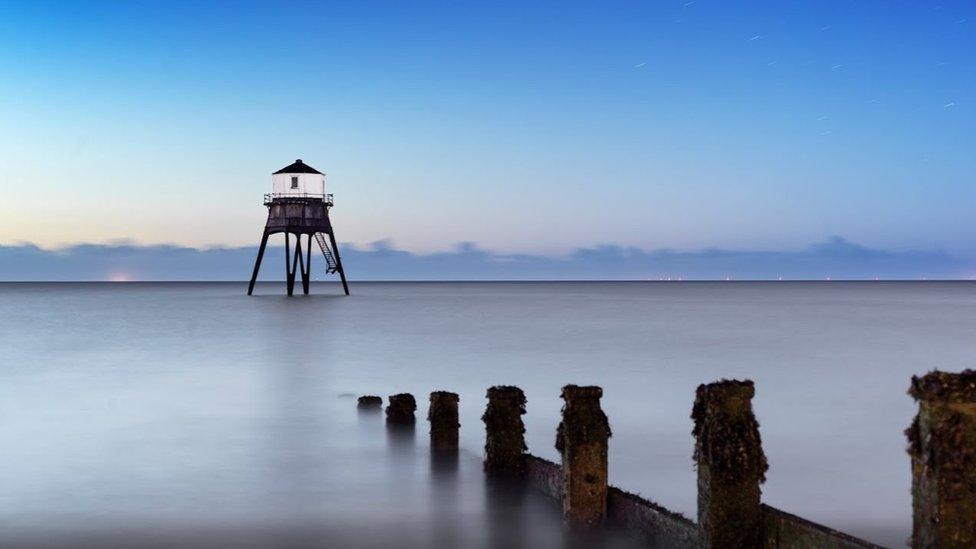John Laing - builder of M1 and Severn Bridge - opens archive
- Published
Construction firm John Laing has built some of the nation's power stations and housing estates, motorways and cathedrals. As Historic England and the John Laing Charitable Trust open the company's picture vault to the public, here are some of the firm's photographs documenting their bigger builds.
The Severn bridge
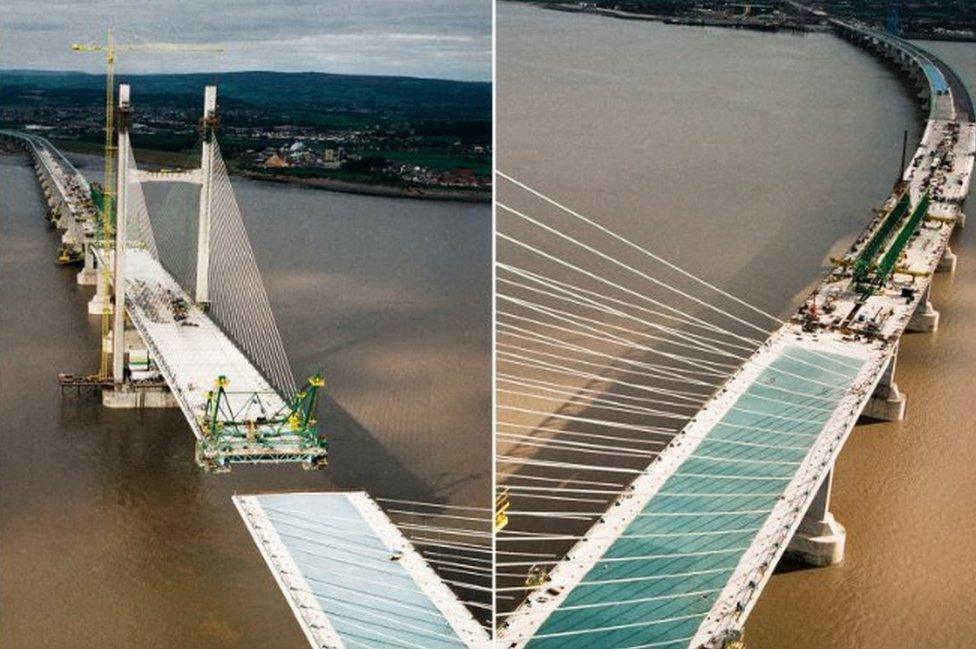
The second Severn Bridge took four years to build
The second Severn bridge, now known as the Prince of Wales Bridge, opened to traffic on 5 June 1996.
Built to ease pressure on the first Severn bridge, which opened 30 years previously, it carries the six lanes of the M4 between England and Wales with more than 30,000 vehicles using it each day.
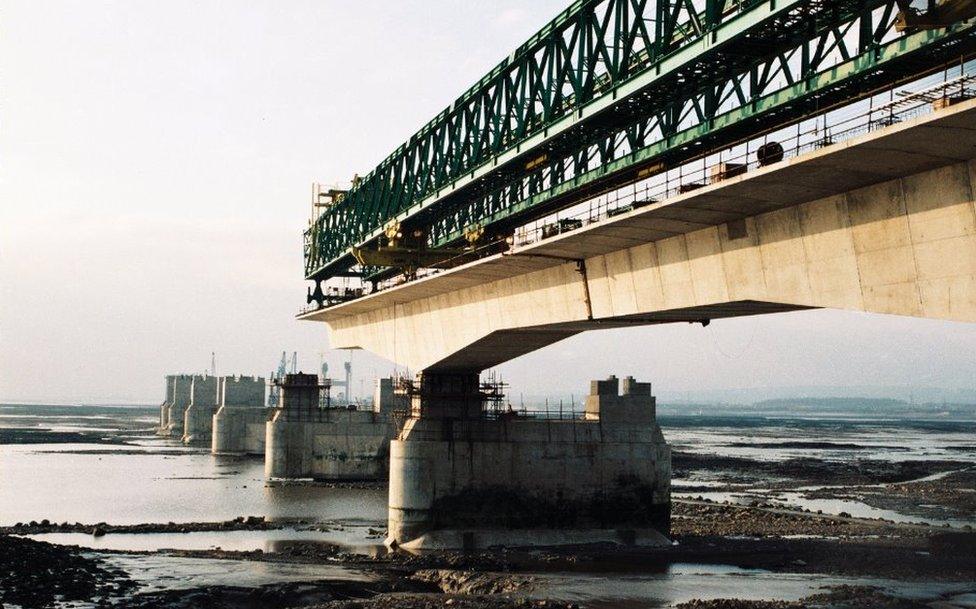
It is three miles (4.8km) long and crosses the River Severn
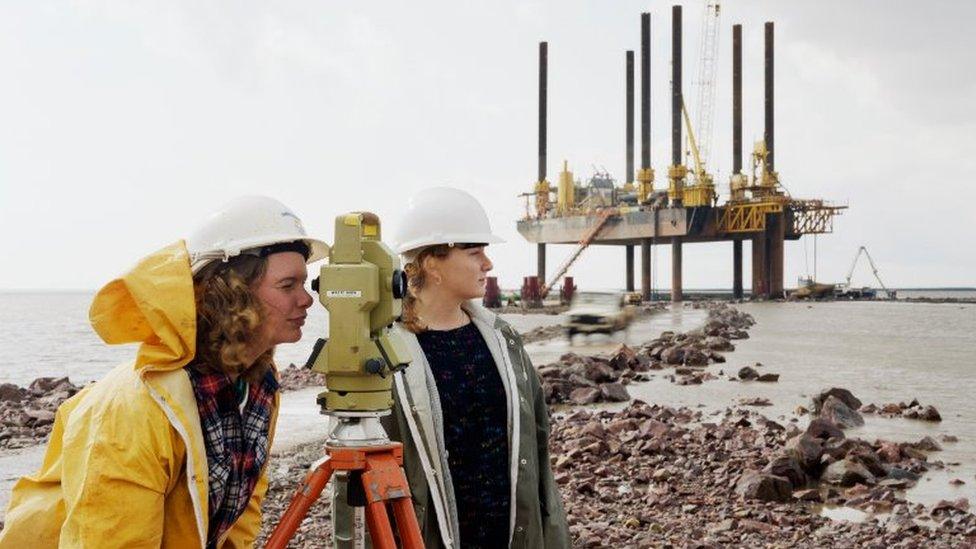
Here Jacqueline Bowker and Anita Manning make measurements with the Jay Robertson, a large jack-up barge, in the background
It took four years to build the three mile (4.8km) span.
A toll that had been in place since the first bridge opened in 1966 was abolished in December 2018.
M1 and M6
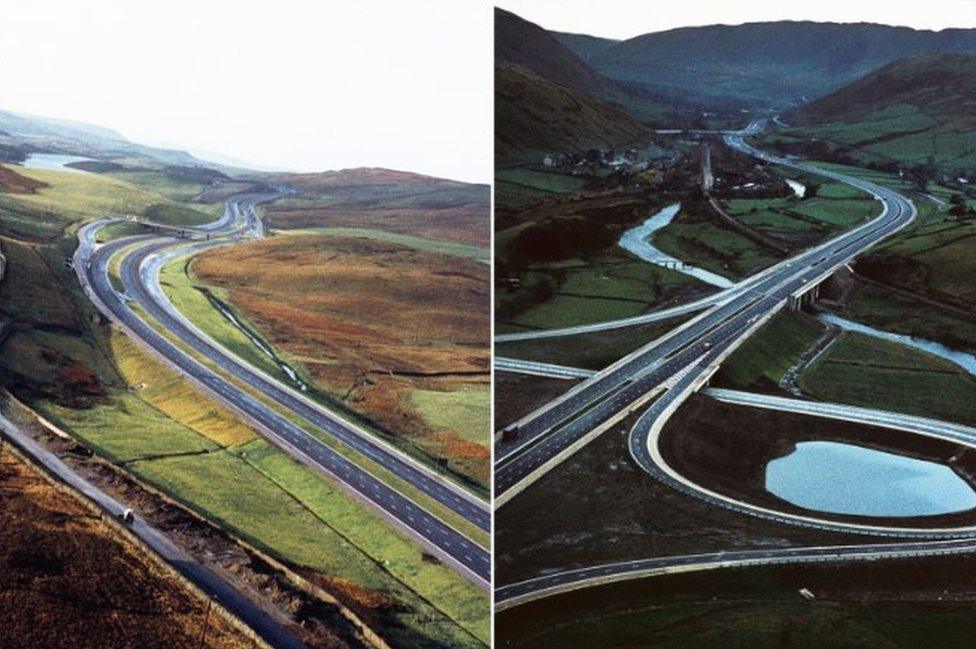
The M6 cuts along the edge of Cumbria
The 1950s and 60s saw the creation and expansion of Britain's motorway network.
John Laing helped build stretches of both the M1 and M6.

It also passes through the West Midlands

Here workers build the central reservation of the M1
Construction of the M6 also saw John Laing employ its first female civil engineer, 21-year-old London University student Kik Hong Ong.
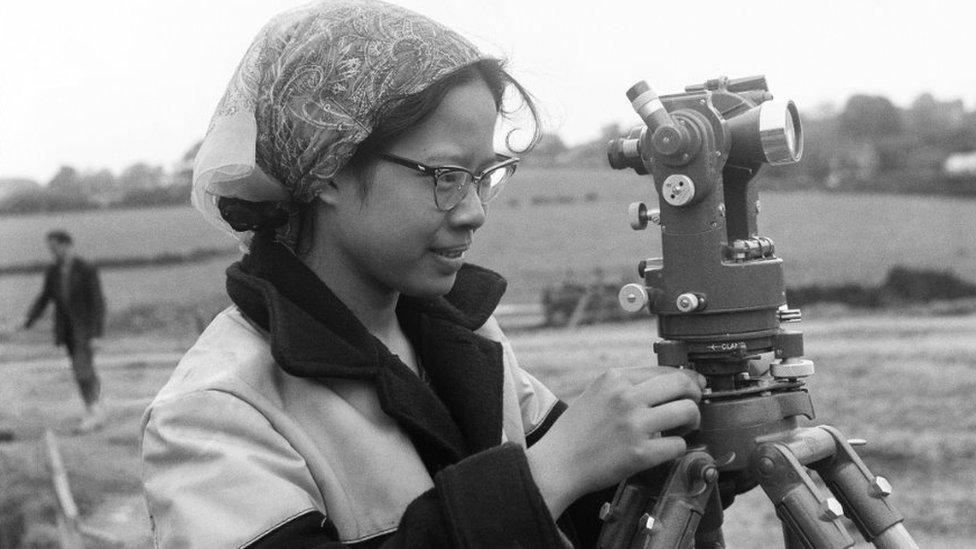
Kik Hong Ong worked on sections C and D of the M6
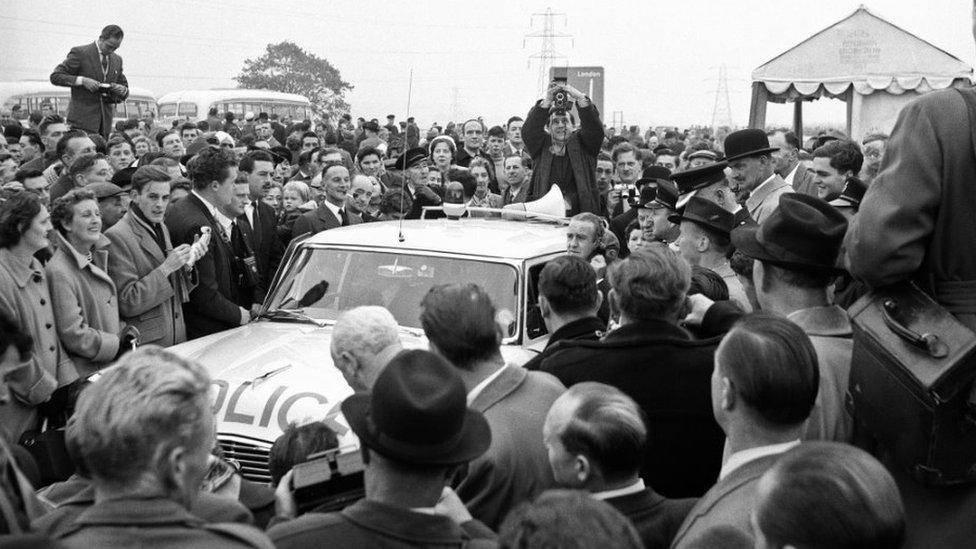
The M1 opened with much fanfare on 2 November 1959
The M6 incorporates the country's first stretch of motorway, the Preston by-pass, which opened in 1958, on its journey from Rugby to Gretna.
Meanwhile, the 193-mile long M1 connects London to Leeds and was built mainly between 1959 and 1968.
Coventry Cathedral
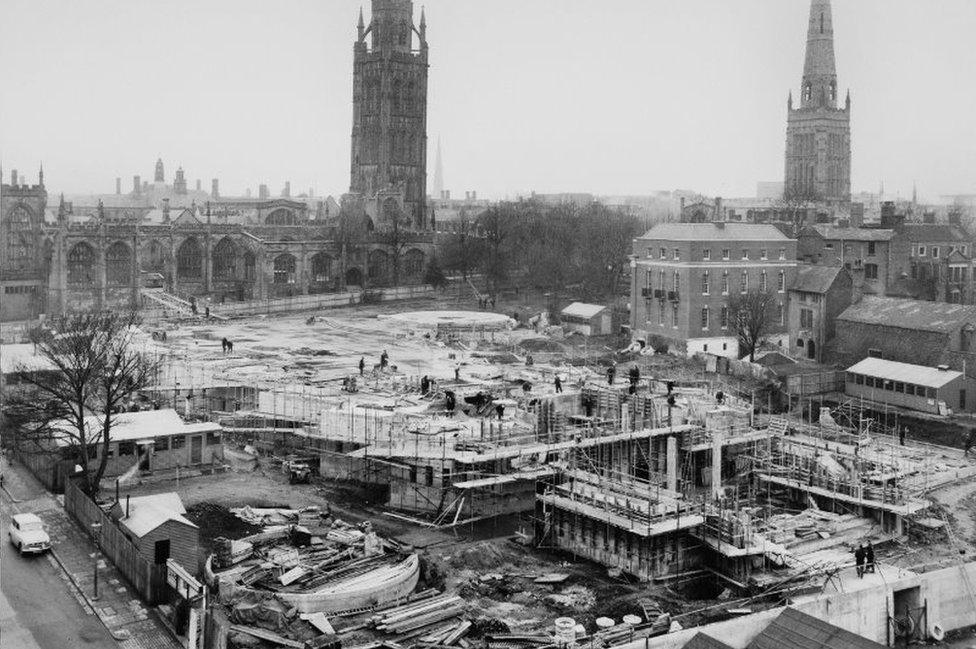
Coventry's new cathedral was built close to the remains of its old one
On 14 November 1940, St Michael's Cathedral in Coventry was practically obliterated by bombs dropped by the Luftwaffe.
As the smoke and dust cleared, all that remained was the tower and spire, outer wall and tomb of its first bishop.
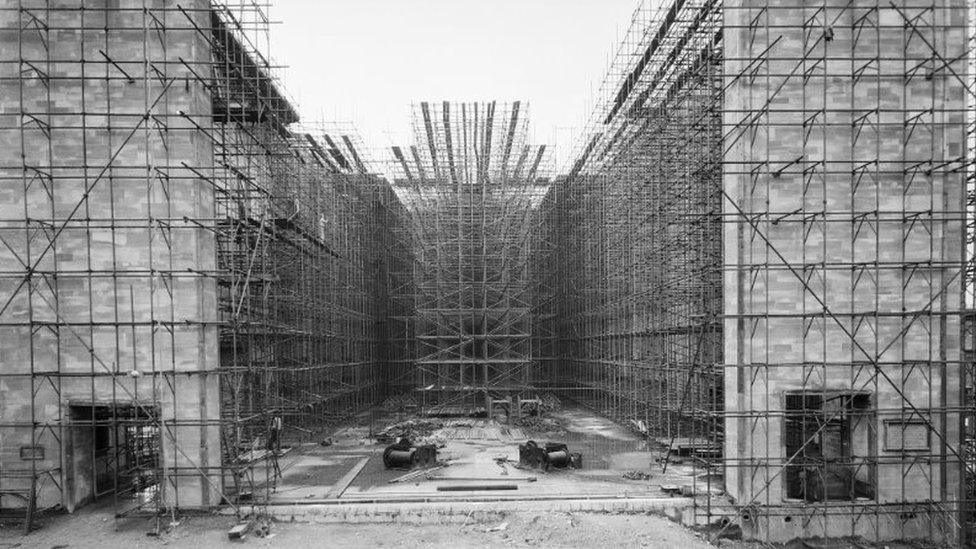
The cathedral was designed by Basil Spence
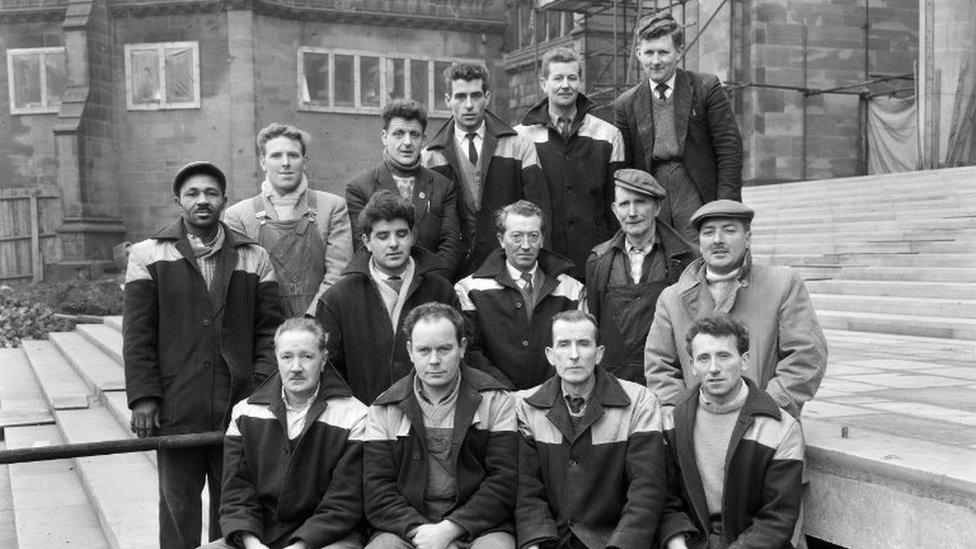
It took six years to build

A helicopter was used to place the cathedral's spire
The new, modernist cathedral was built between 1956 and 1962 a stone's throw away from where the shell of the bombed building still stands.
It was designed by Basil Spence and built by John Laing, with construction including the use of a helicopter to place the cathedral's tower.
Barbican estate
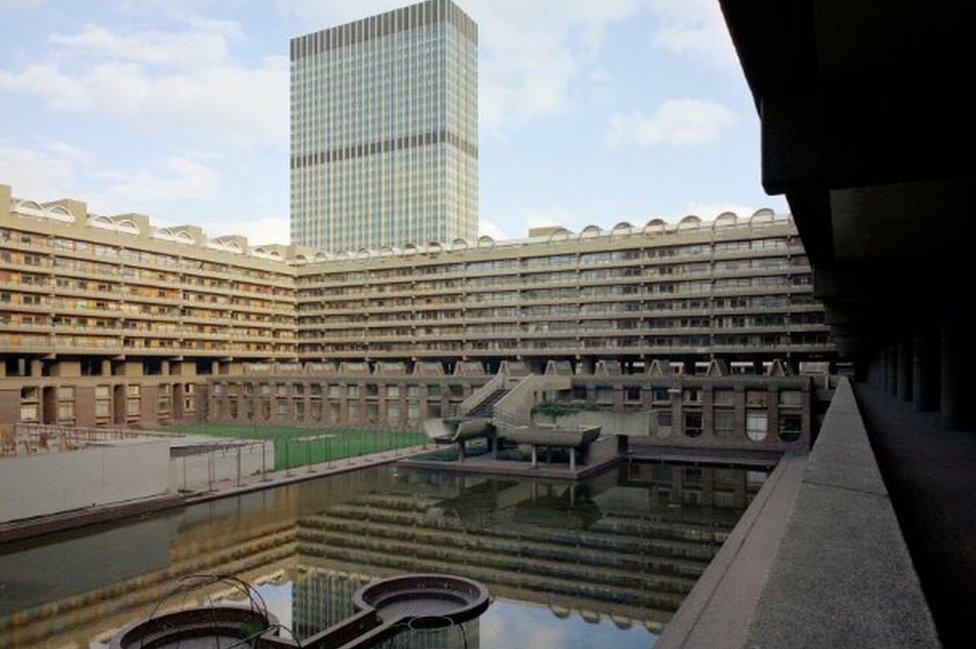
The Barbican estate was built in the 1960s
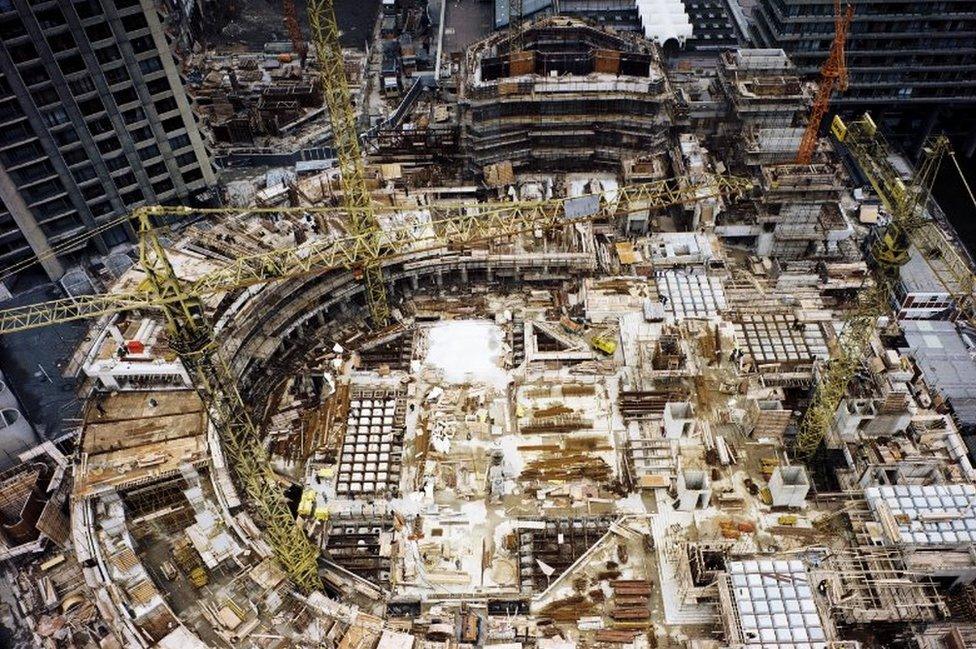
It was built in the Cripplegate area
The 40-acre Barbican estate was built in the 1960s close to London's old city wall on a site flattened by World War Two bombing.
Hailed as a fine example of brutalist concrete architecture, it is comprised of flats, an arts centre, school and the Museum of London.

It was designed to house city professionals and their families

The Queen visited the Barbican in 1972
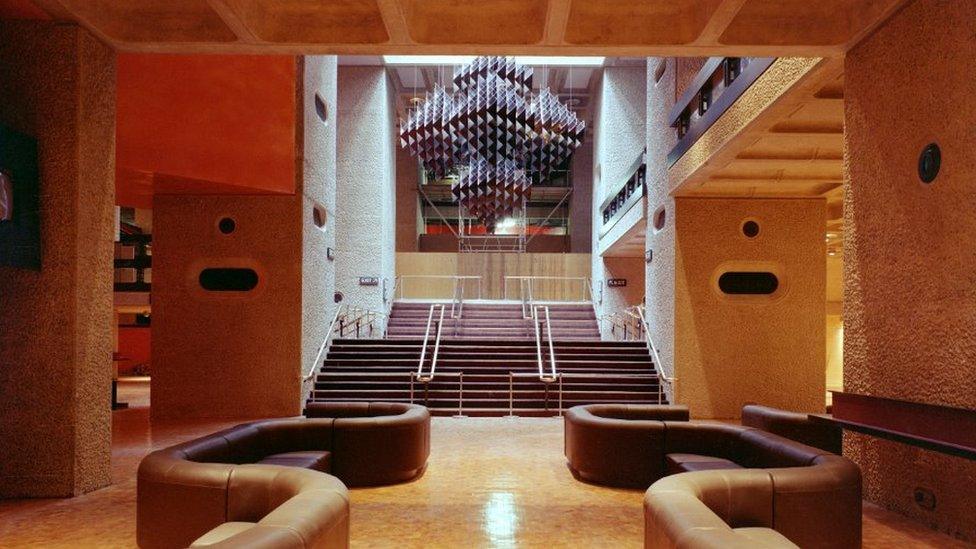
The arts centre contains several theatres, cinema screens and a library
It is home to about 4,000 people and was built to tackle a shortfall in housing in that part of London after the war.
The Queen visited the Barbican on 20 November 1972, the day she celebrated her silver wedding anniversary.
Berkeley Nuclear Power Station
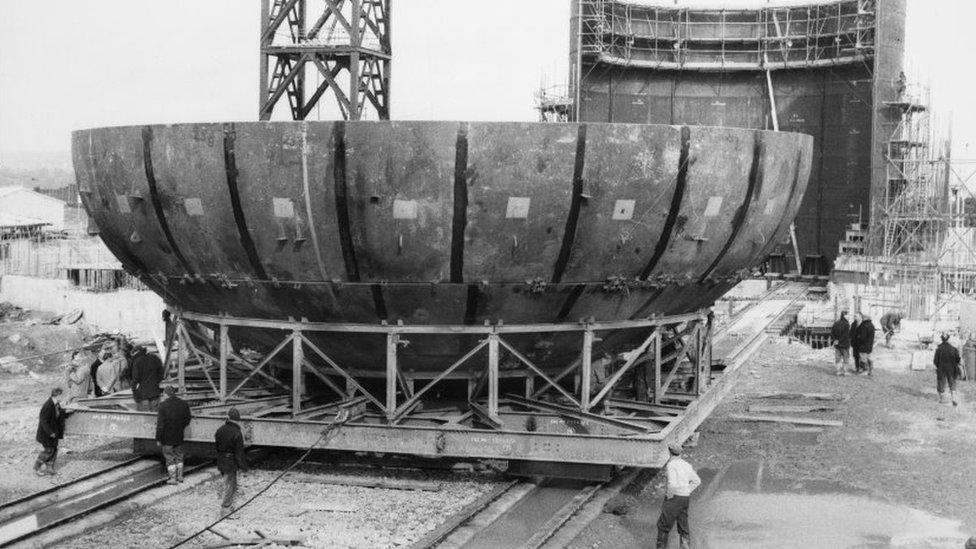
Berkeley was a Magnox power station which ran on uranium
Berkeley, one of the world's first commercial nuclear power stations, was in operation between 1962 and 1989 with its reactors producing enough electricity to power an area the size of Bristol each day.
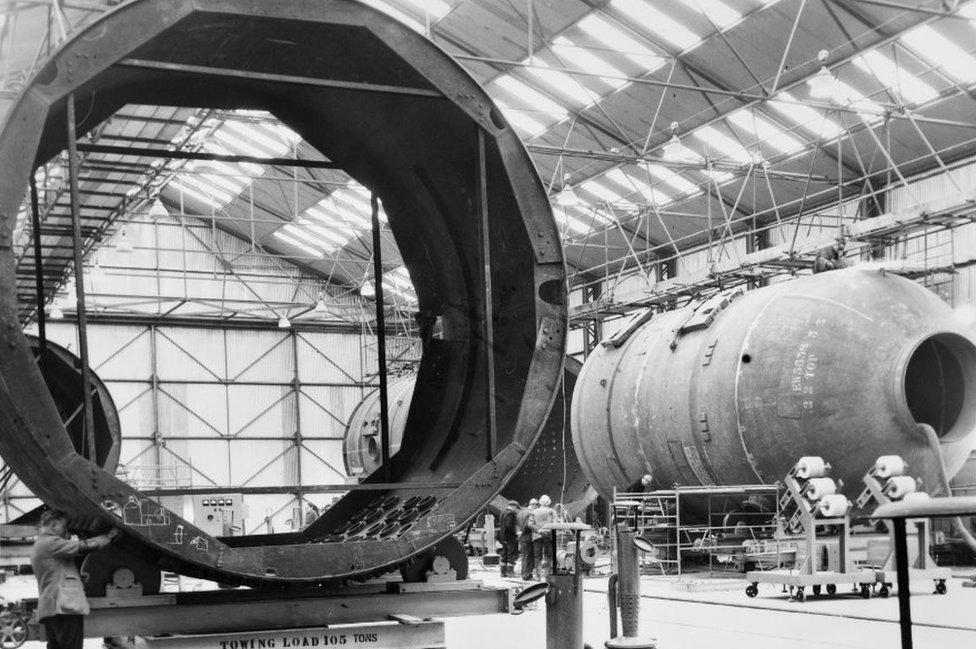
It was commissioned in 1962 and operated for 27 years
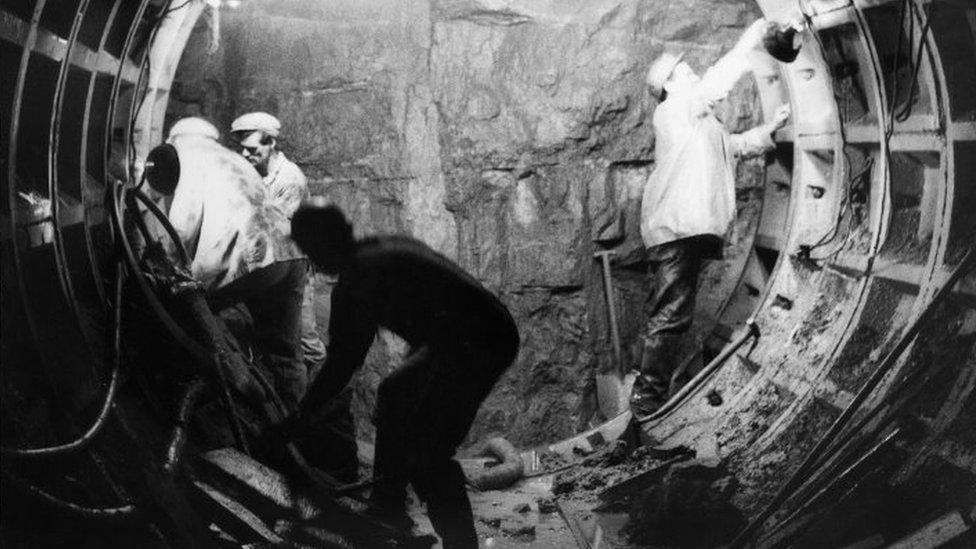
Here workers fit lining panels inside a cooling water tunnel
It stood beside the River Severn in Gloucestershire and while many of its buildings have been removed, work is only now starting on removing the nuclear waste.
It will not be safe for humans to go inside its two reactor cores until 2074.
London Central Mosque
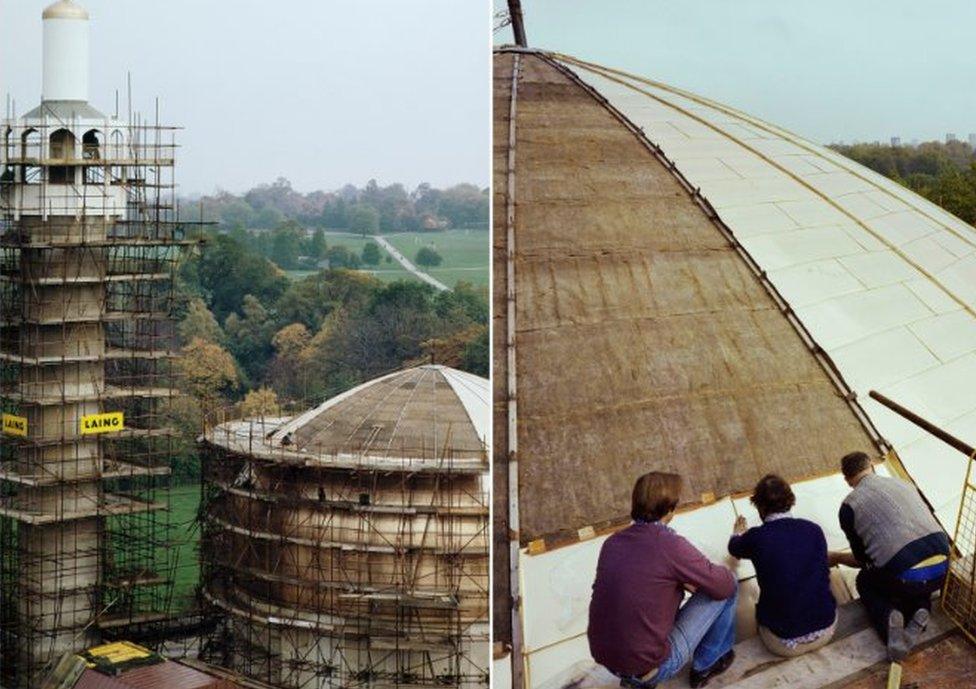
More than 100 designs were submitted for the mosque
The mosque near Regent's Park opened in 1977 and can accommodate more than 5,000 worshippers.
It is also known as the Islamic Cultural Centre.
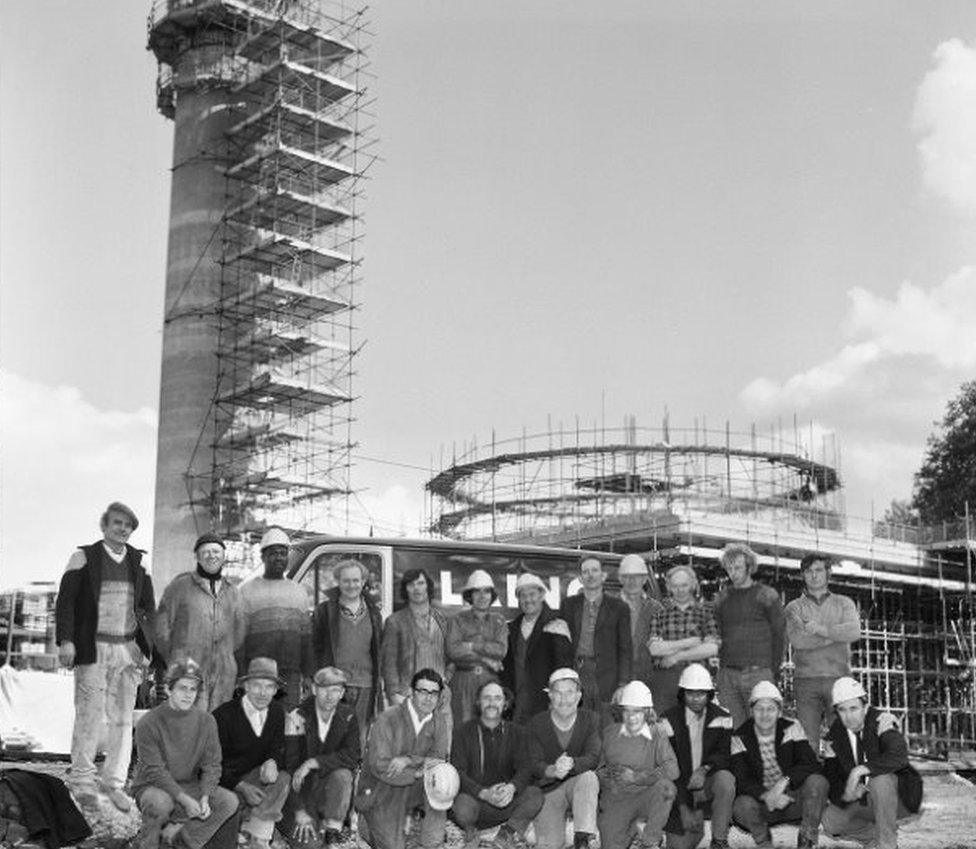
The minaret was constructed using a slipforming technique, in which concrete is poured into a continuously moving form which is raised at a rate that allows the concrete to harden and maintain its shape
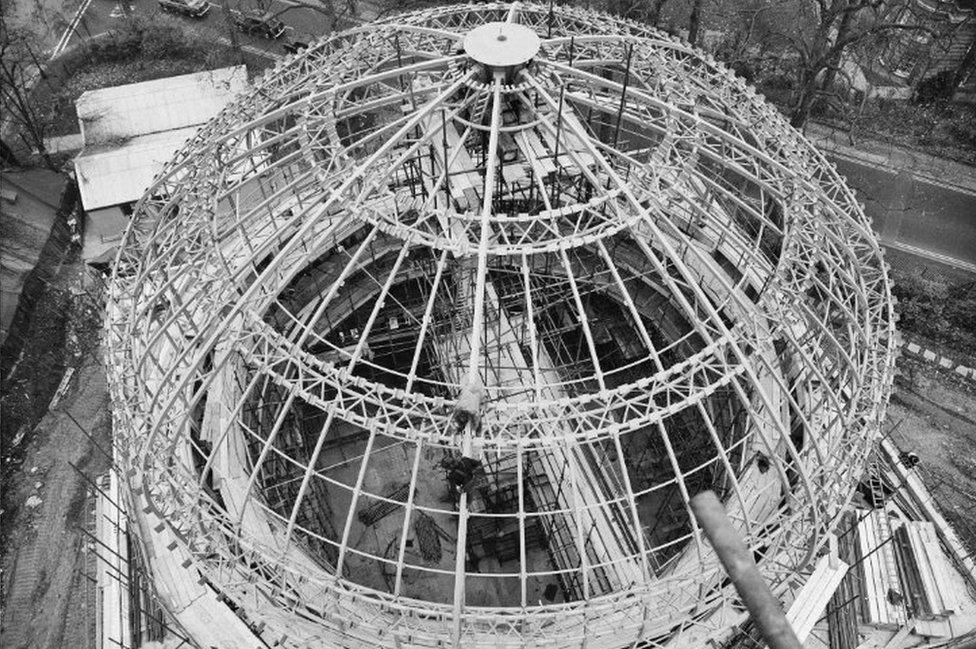
The dome's exterior was covered in gold-coloured copper alloy
More than 100 designs were submitted for the mosque before Frederick Gibberd's plan was chosen, with construction taking three years.
While the dome's exterior was covered in gold-coloured copper alloy, the interior was lined with an intricate geometric tile mosaic.

The interior was lined with an intricate geometric tile mosaic
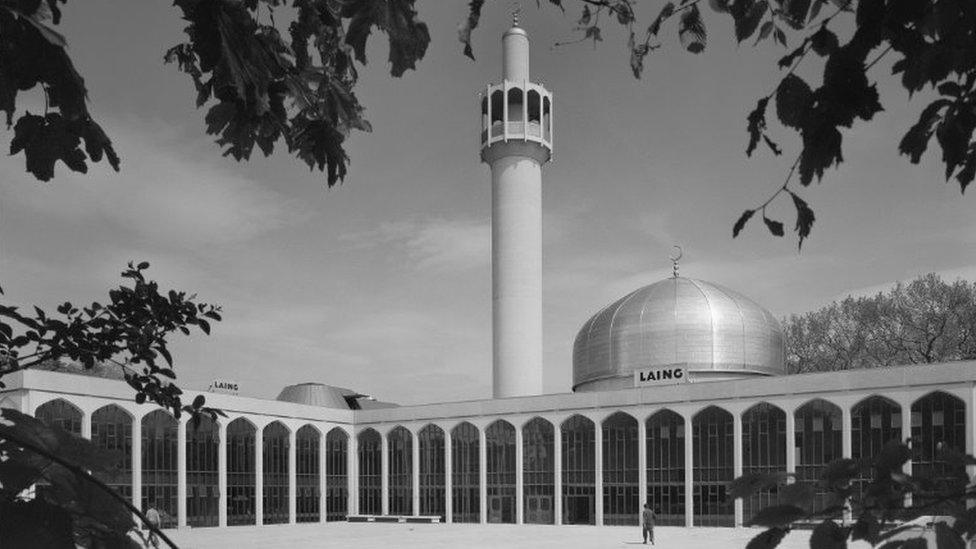
The completed mosque opened in 1977
The pictures are among 10,000 from the John Laing Photographic Collection being digitised, which will be open for public access on the Historic England website as part of the Breaking New Ground project.
- Published9 January 2020
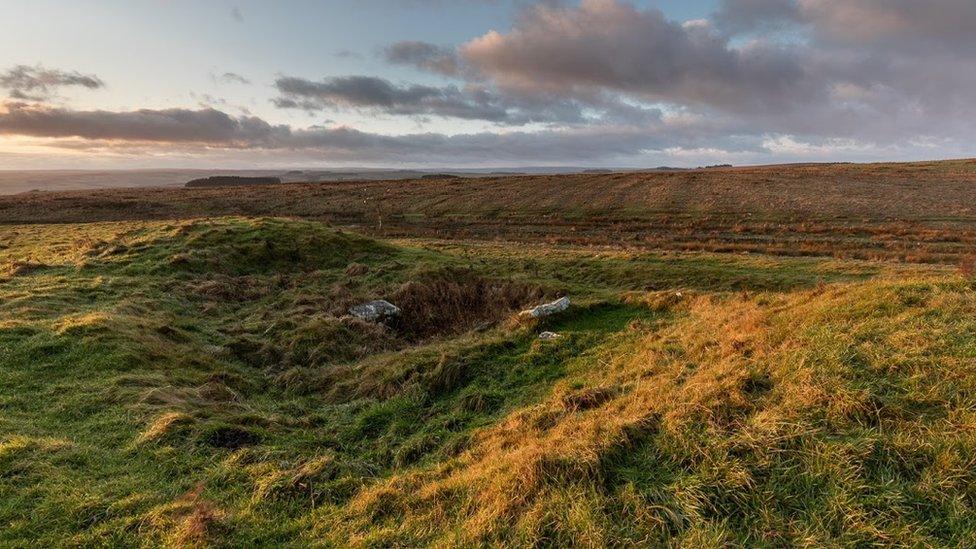
- Published28 December 2019
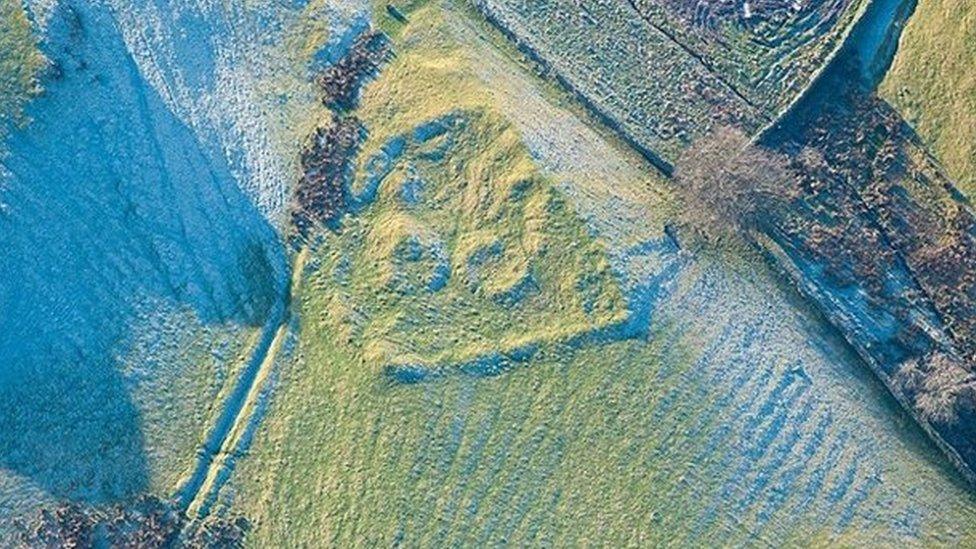
- Published17 October 2019
